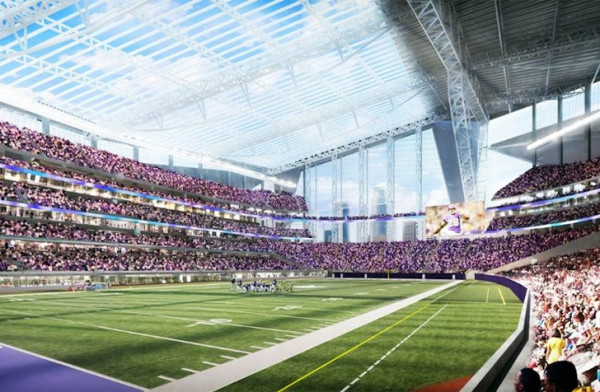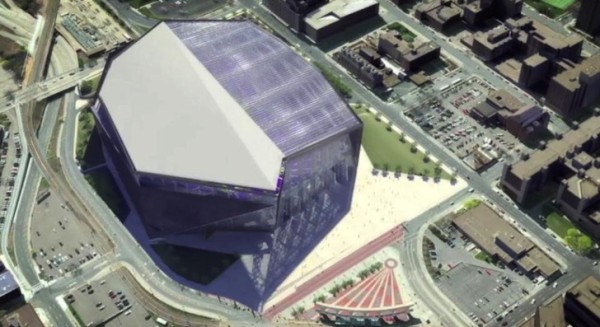For the last few decades, sports fans in the Twin Cities have fought a brave and losing battle against the elements to watch their teams play. A new stadium, planned for completion in 2016 for the NFL’s Minnesota Vikings, is trying a new tactic in its quest to keep its fans comfortable in the harsh winters: Let the sunshine in.
Since 1982, the Metrodome in Minneapolis has been the home of the Vikings and, until 2009, the Major League Minnesota Twins baseball team. On five separate occasions, however, the 10-acre roof, made of Teflon-coated fiberglass and held up by pressurized air, has suffered a failure, causing the roof to deflate. The most recent incident happened in December 2010, when the weight of accumulated snow caused a catastrophic collapse.

The team and the city have recently approved a plan from HKS Sports & Entertainment Group to build a new, energy-efficient stadium to replace the old Metrodome. With a traditional, rigid support structure, the new edifice, currently named Vikings Stadium, will include the world’s largest transparent roof. Unlike the Metrodome, the new $975 million stadium will have a steeply canted roof, which will allow the city’s heavy snowfalls to simply slide off before they can building up to dangerous levels.
The clear roofing panels in the HKS design will be made of strong ethylene tetrafluoroethylene (ETFE), supported by a zinc framing, which will enable sunlight to flood the stadium without the need to build an expensive and energy-consuming retractable roof. The sunlight will also produce additional solar gain to help warm the interior. Excess heat will rise to the peak of the stadium, where it can be vented as needed.

To provide a more comfortable experience for the fans, as well as provide additional views, the 65,000-seat stadium will also include four 95-foot-high glass doors at both ends that can open to the outside air, providing natural ventilation during pleasant weather. HKS also said the roof will have other “sustainable characteristics” that will produce lower operating costs during the winter and summer months.
“Vikings fans will be closer to the action than any stadium in the country,” said the Vikings’ owner and chairman Zygi Wilf. “The combination of operable end walls with a clear roof and large windows throughout the facility will give fans the opportunity to experience the best of both worlds: an outdoor feel with protection from the elements.”
Once the design receives final approval, groundbreaking should take place in October of this year, while the demolition process at the Metrodome would begin at the end of the next NFL season in early 2014.